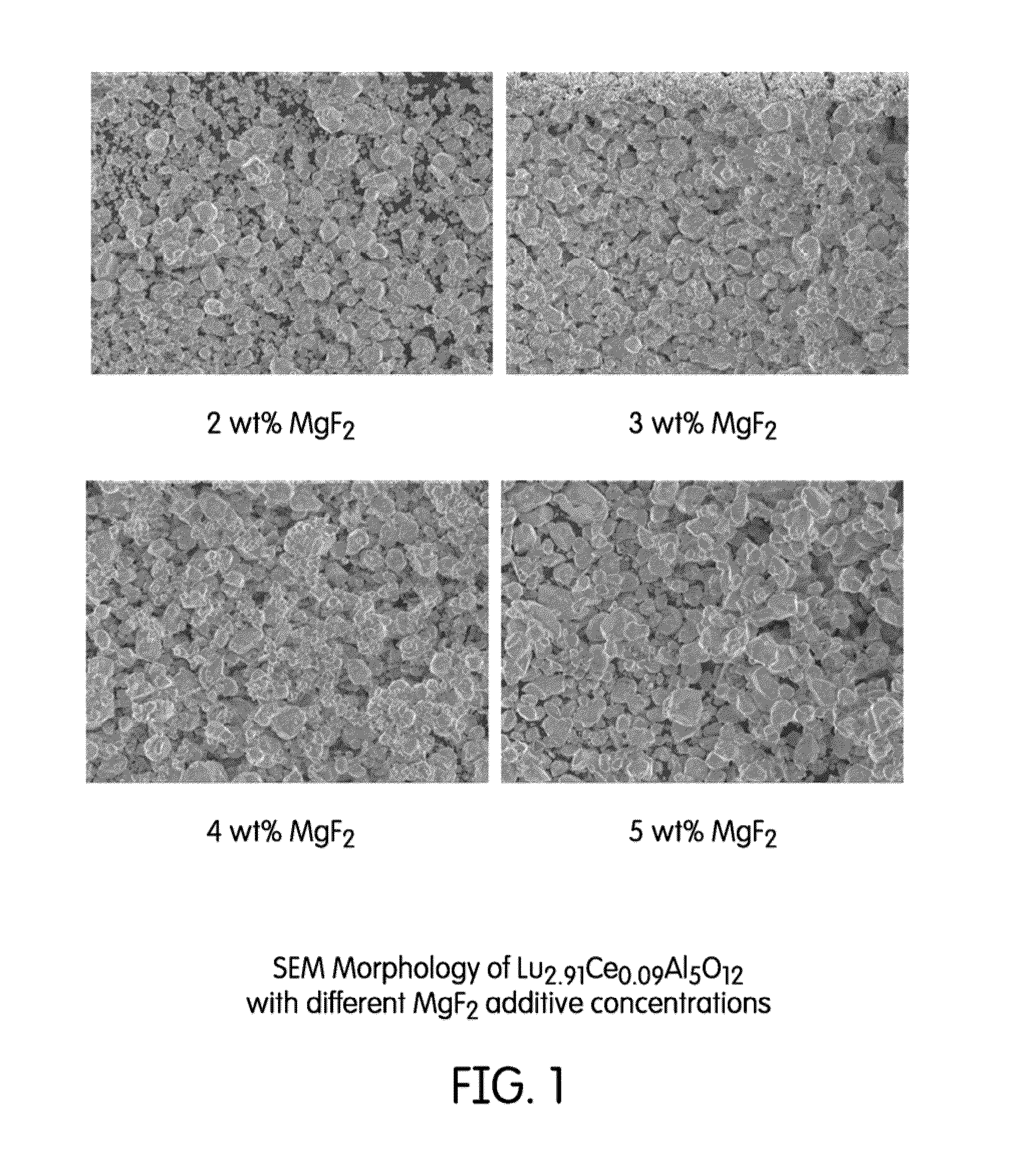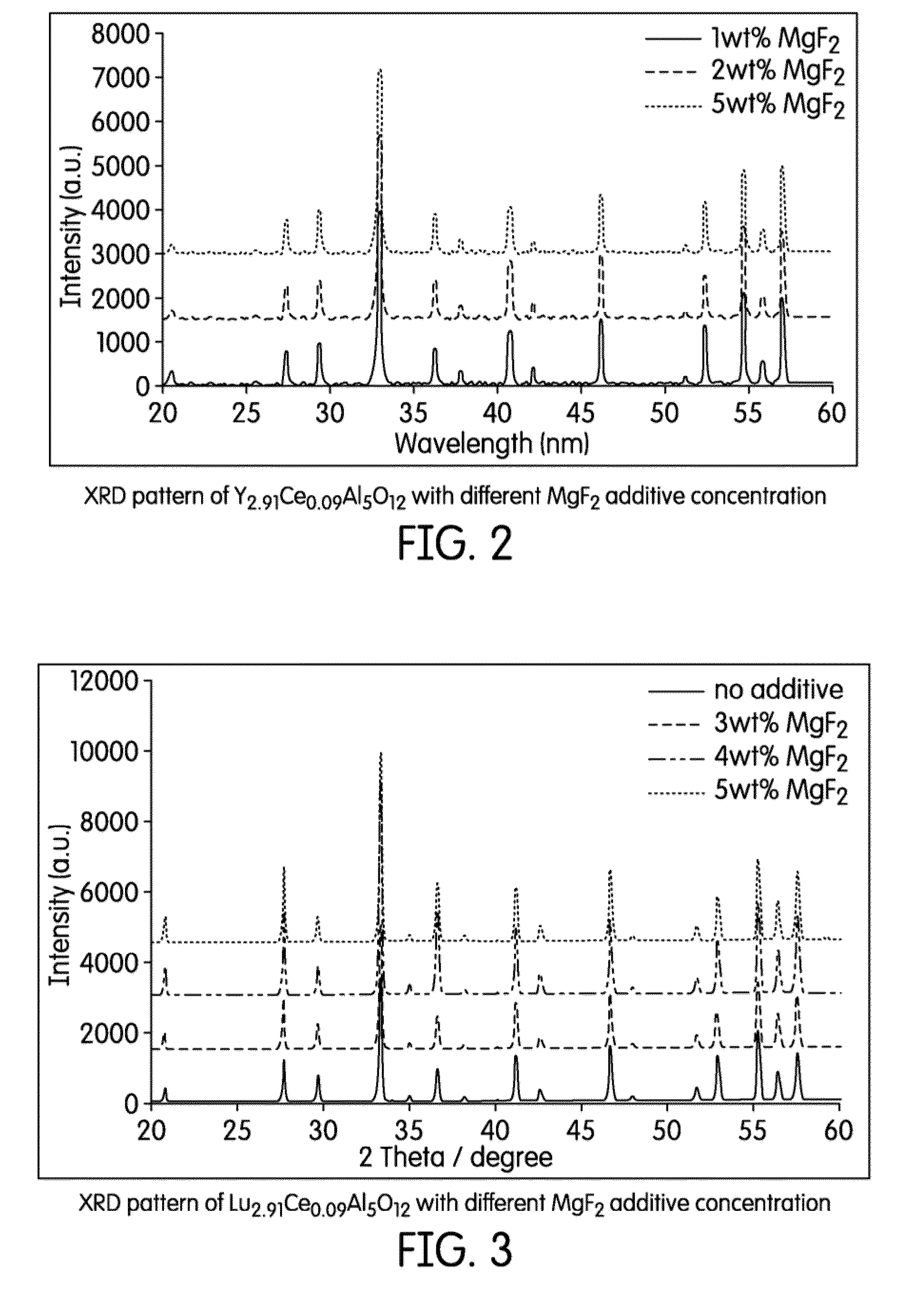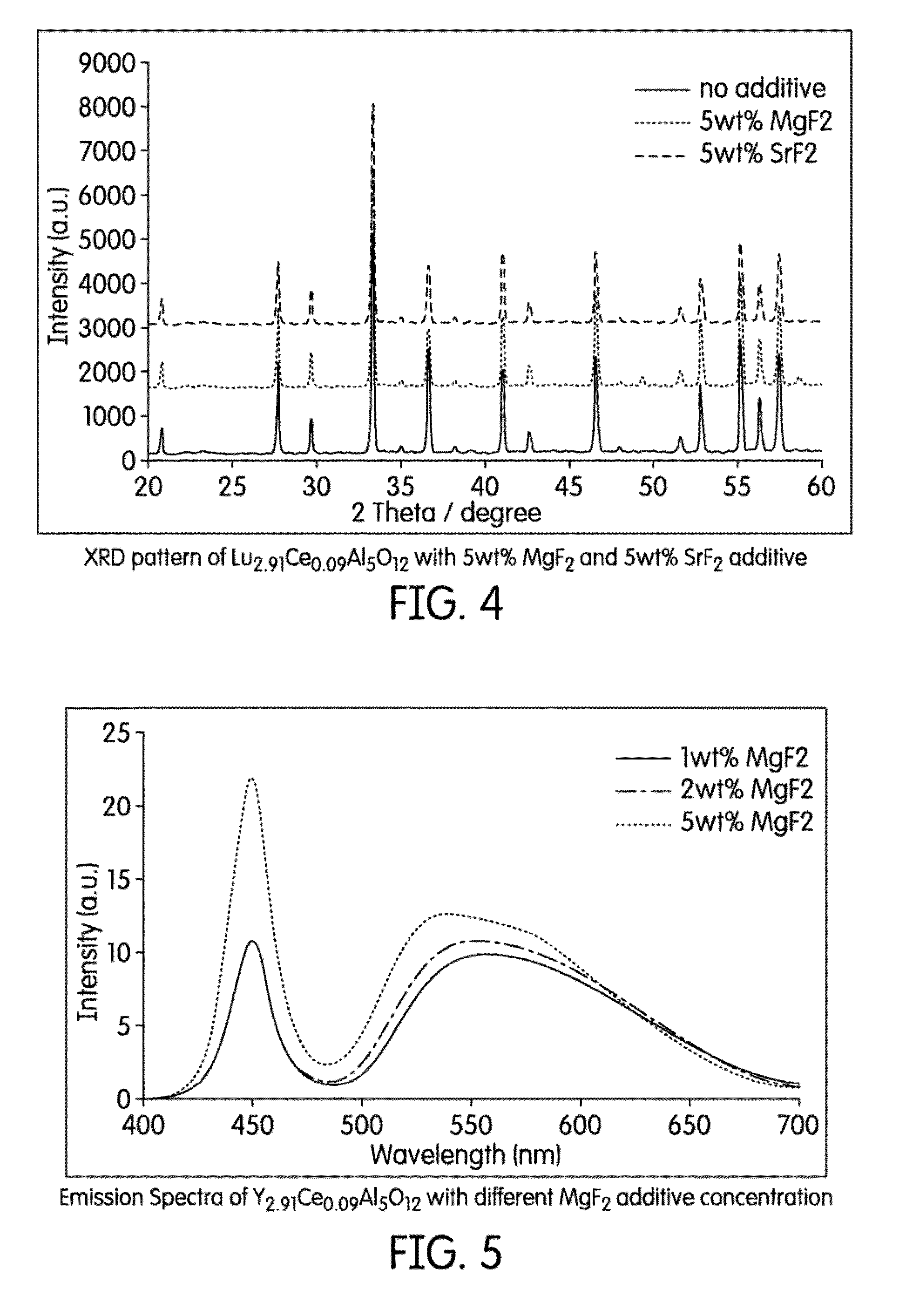Yellow-green to yellow-emitting phosphors based on halogenated-aluminates
a technology of halogenated aluminates and phosphors, which is applied in the direction of discharge tubes/lamp details, discharge tubes luminescent compositions, discharge tubes/lamp details, etc., can solve the problems of insufficient color rendering, insufficient emission wavelength, and insufficient peak emission of this phosphor
- Summary
- Abstract
- Description
- Claims
- Application Information
AI Technical Summary
Benefits of technology
Problems solved by technology
Method used
Image
Examples
Embodiment Construction
[0033]A yttrium aluminum garnet compound activated with the rare earth cerium (YAG:Ce) has been, historically, one of the most common choices of phosphor material made if the desired application was either high power LED lighting, or cool white lighting of a non-specific, general nature. As one might expect, there is a requirement in general lighting for highly efficient components, both in the case of the LED chip supplying the blue light component of the resultant white light, and the excitation radiation for the phosphor, where the phosphor typically supplies the yellow / green constituent of the resulting product white light.
[0034]As discussed in the previous section of this disclosure, YAG:Ce demonstrates this desired high efficiency, having a quantum efficiency greater than about 95 percent, and it would therefore appear to be a difficult task to improve upon this number. But it is known in the art that the efficiency of an LED chip increases with a decrease in emission waveleng...
PUM
 Login to View More
Login to View More Abstract
Description
Claims
Application Information
 Login to View More
Login to View More - R&D
- Intellectual Property
- Life Sciences
- Materials
- Tech Scout
- Unparalleled Data Quality
- Higher Quality Content
- 60% Fewer Hallucinations
Browse by: Latest US Patents, China's latest patents, Technical Efficacy Thesaurus, Application Domain, Technology Topic, Popular Technical Reports.
© 2025 PatSnap. All rights reserved.Legal|Privacy policy|Modern Slavery Act Transparency Statement|Sitemap|About US| Contact US: help@patsnap.com



